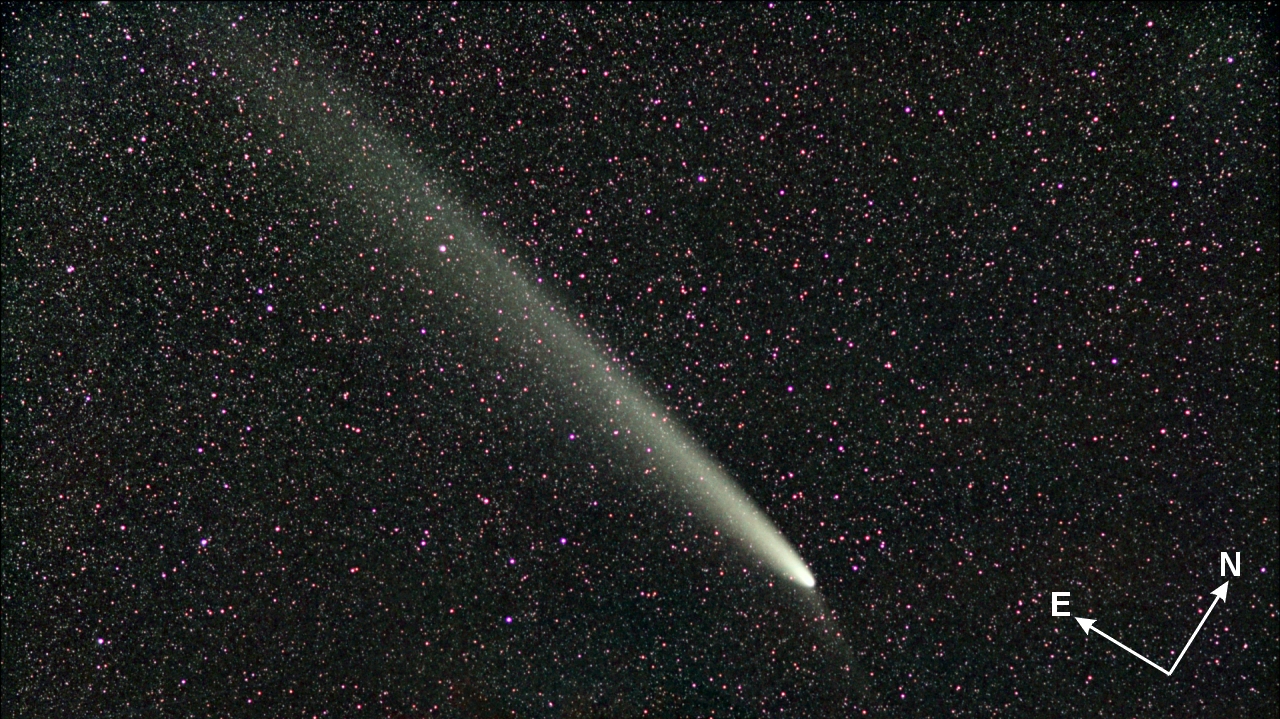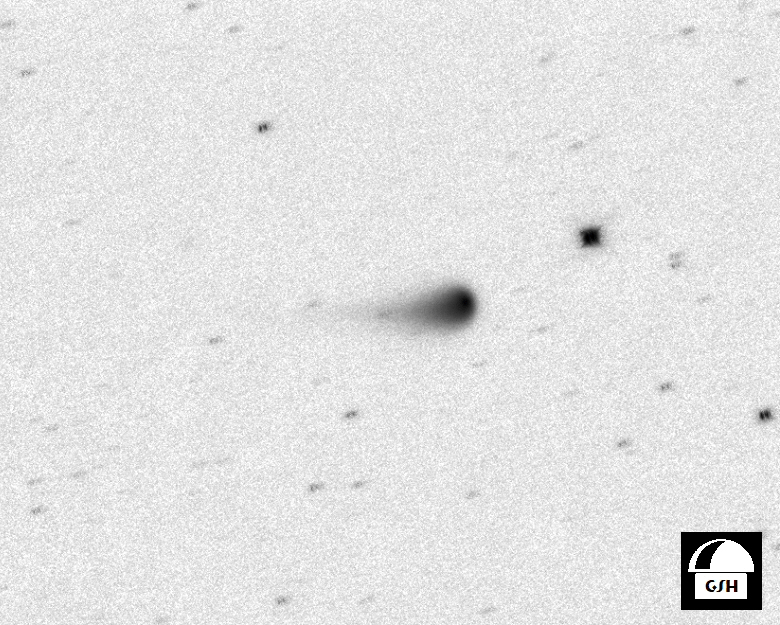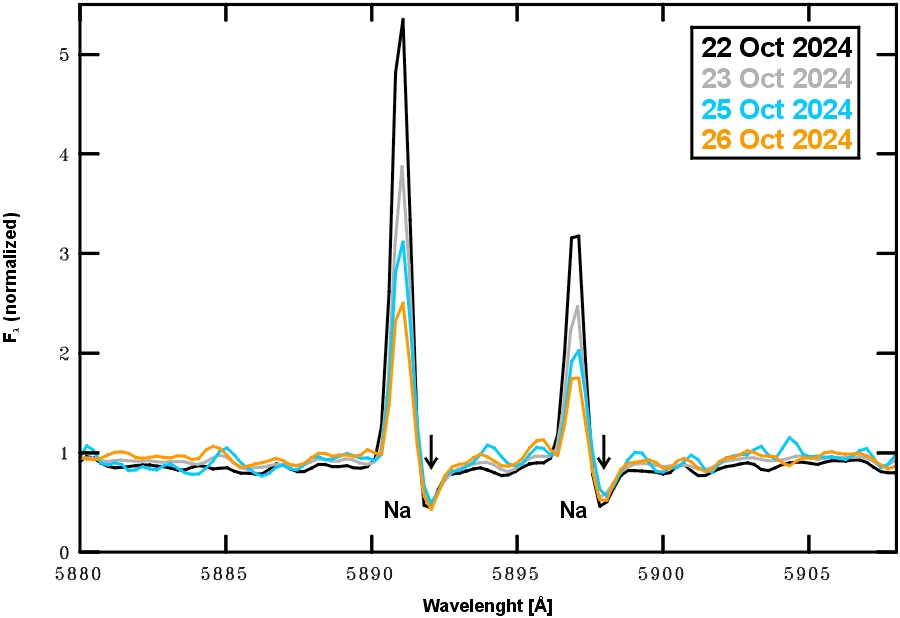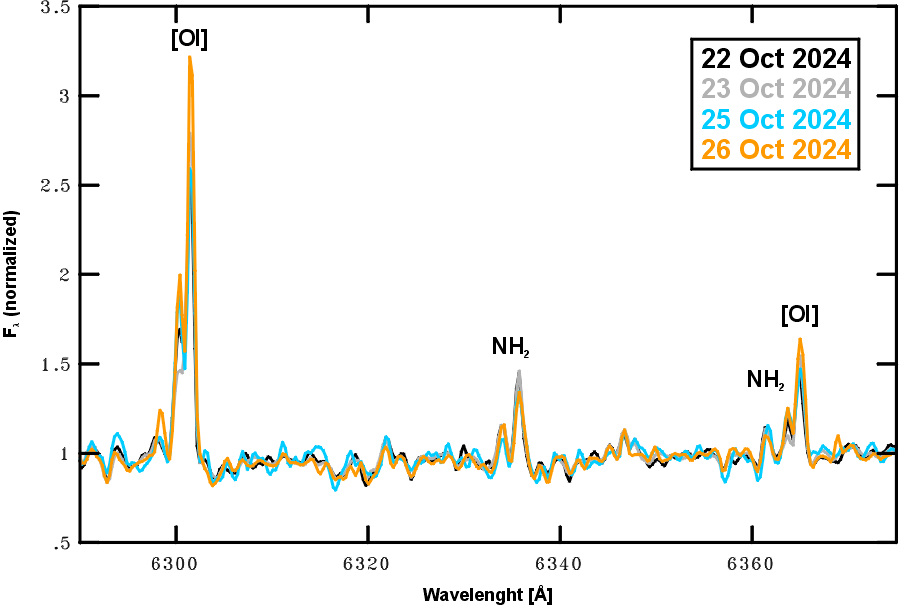Follow-Up Imaging and Spectroscopic Observations of Comet C/2023 A3

Image of comet C/2023 A3, taken at the University Observatory Jena on the evening of 23 October 2024.
The image shows both the approximately 15° long dust tail of the comet and its ca. 1.5° long antitail, which points to the east and south-west, respectively.
Spectra of comet C/2023 A3, taken with the Échelle spectrograph FLECHAS at the 90cm reflector telescope of the University Observatory Jena on four nights between 22 and 26 October 2024. The FLECHAS spectra show emission lines originating from atoms and molecules in the comet's coma. In the wavelength range between 5000 and 7000Å, the most prominent emission lines are those of Na, [OI], NH2 and C2. In addition, absorption lines (e.g. those of Mg or Na as indicated here with black arrows) are also detected in the spectra of C/2023 A3, which are observable due to the reflection of sunlight from dust particles in the coma of the comet. Due to the velocity of the comet relative to the observation site, the emission lines are redshifted (by about 54 and 58 km/s for 22 and 26 October 2024, respectively, allowing the separate detection of the cometary and telluric [OI] emission at 6300 and 6364Å), which agrees well with the expected RV of the comet based on its current orbital solution. While the [OI], NH2 and C2 emission lines remain stable at the 3σ-level, the equivalent width of the Na emission lines decreases significantly by about 2/3 during the observation period. On 3 November 2024 no more Na emission was detected in the spectrum of C/2023 A3 (see comparison of FLECHAS spectra). Only the Na absorption features, which are part of the spectrum of reflected sunlight, are still present in the comet's spectrum.
Evolution of Comet C/2023 A3 prior to its Perihelion Passage

Comet C/2023 A3, imaged in the R-band with the CTK-II between 26 April and 28 May 2024.

 ..........
..........
 ..........
..........
